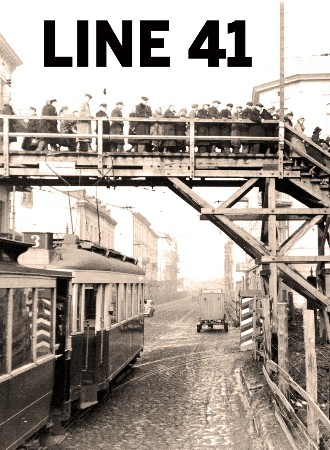
Line 41 2015
Distributed by Film Movement
Produced by Tanja Cummings
Directed by Tanja Cummings
DVD , color and b&w, 101 min.
High School - General Adult
Human Rights, Jews, European History, World War II
Date Entered: 10/10/2017
Reviewed by Michael Schau, Seminole State College, Sanford, FLThe Lodz ghetto held 185,000 Jews, Roma and Sinti. It functioned as a huge labor camp in support of the Wehrmacht war efforts. Thousands died from hunger and disease or were sent to death camps like Auschwitz. By the end of the war only 800-900 survived. One who did survive was Natan Grossman who returns to Lodz, Poland to learn the fate of his brother he lost contact with 70 years ago. The parallel story of Jen-Jurgen Ventzki, the son of the wartime Mayor of Lodz unfolds as he discovers proof his father was complicit in the organization of the ghetto and the extermination of the Jews and Gypsies there.
A third facet is that the Ghetto was surrounded by a city inhabited by German and Polish citizens, yet a street car, line 41 (hence the title), cut through the heart of it. The citizens could plainly see the conditions of their fellow Poles in the Ghetto. How did they react? Apparently with indifference; they would not talk about it at all.
Many areas of Lodz look exactly like Grossman left them in 1945, his home, his neighborhood and many of the streets, including the same street car line. Other areas have been made into memorials and museums to the Holocaust. Through these Grossman searches for the fate of his brother, which was like walking through an eerie time machine, so little has changed. Grossman finally finds evidence his brother did die in an attempt to organize a resistance movement and is satisfied that at least he now knows. The two then meet, brought together by the filmmaker and find a form of reconciliation. Grossman expresses pride that the son of a Nazi official can denounce his father’s monstrous acts. If there is a message, the filmmaker leaves it up to the viewer. Somber electronic music is used in the beginning and end. Buildings are seen drawn by an invisible ink pen that would then dissolve into the real place of importance to Grossman, as if the showing the process of memory. This is a haunting documentary that will resonate with anyone interested in the Holocaust and the fate of their survivors.